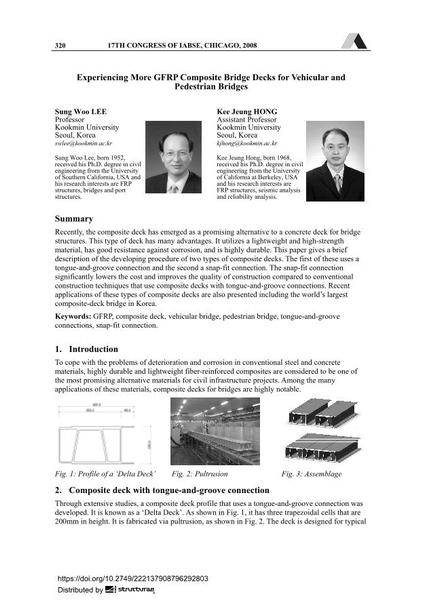Experiencing More GFRP Composite Bridge Decks for Vehicular and Pedestrian Bridges

|
|
|||||||||||
Bibliografische Angaben
| Autor(en): |
Kee Jeung Hong
Sung Woo Lee |
||||
|---|---|---|---|---|---|
| Medium: | Tagungsbeitrag | ||||
| Sprache(n): | Englisch | ||||
| Tagung: | 17th IABSE Congress: Creating and Renewing Urban Structures – Tall Buildings, Bridges and Infrastructure, Chicago, USA, 17-19 September 2008 | ||||
| Veröffentlicht in: | IABSE Congress Chicago 2008 | ||||
|
|||||
| Seite(n): | 320-321 | ||||
| Anzahl der Seiten (im PDF): | 8 | ||||
| Jahr: | 2008 | ||||
| DOI: | 10.2749/222137908796292803 | ||||
| Abstrakt: |
Recently, the composite deck has emerged as a promising alternative to a concrete deck for bridge structures. This type of deck has many advantages. It utilizes a lightweight and high-strength material, has good resistance against corrosion, and is highly durable. This paper gives a brief description of the developing procedure of two types of composite decks. The first of these uses a tongue-and-groove connection and the second a snap-fit connection. The snap-fit connection significantly lowers the cost and improves the quality of construction compared to conventional construction techniques that use composite decks with tongue-and-groove connections. Recent applications of these types of composite decks are also presented including the world’s largest composite-deck bridge in Korea. |
||||
| Stichwörter: |
Fußgängerbrücke GFK
|
||||


